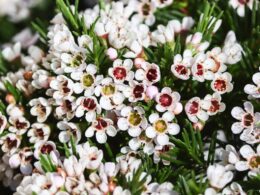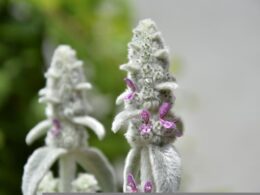Carrion Flower Overview
The Stapelia carrion flower is a large, single flower that can reach up to 12 inches in diameter. The petals are red and yellow, with a silky texture and fringed with hairs. The center of the flower is filled with numerous stamens, and the characteristic smell of rotting flesh attracts flies that pollinate it.
Where to Find the Corpse Flower
Carrion flowers are native to Africa and South America, but they have been introduced to many other parts of the world as ornamental plants. The flowers bloom in late summer and early fall (but some carrion flowers bloom only every few years), and they are pollinated by flies and other insects attracted to their smell. The name carrion flower often refers to the genus Stapelia, which boasts about 45 species of succulent plants, e.g. Stapelia gigantea.
Characteristics
These succulents are notable for their thick, fleshy leaves and stems, which keep water in reserve to thrive in dry conditions. Many species of Stapelia also have large, showy flowers that make them popular ornamental plants.
The Stinky Smell
The Amorphophallus titanum is yet another carrion flower, and this one is native to Sumatra. It is also called the corpse flower or the stinky flower due to its strong odor, which has been described as similar to the putrid smell of rotting flesh.
The plant can reach heights of up to 8 feet and produces a large, spiky bloom surrounded by a deep red spathe. The strong smell of the bloom attracts flies and other insects, which pollinate the plant.
The blooms only last for a few days before they wilt and die. Once a year or even less, the plant produces a new bloom. The corpse flower is an amazing plant that has intrigued scientists and nature lovers for years.
Caring for Carrion Flowers
The Stapelia carrion flower is not difficult to grow, and it makes an interesting addition to any garden. However, it does require full sun and well-drained soil. The plant is also quite drought tolerant. Carrion flowers can be propagated via seed or cuttings.
If you’re growing them from seed, it is best to sow the seeds in early spring. Cuttings can be taken from the tips of the stems in late spring or early summer. Once established, carrion flowers will bloom from mid-summer to late fall. To encourage continuous blooming, deadhead the spent flowers regularly.
Can Carrion Flowers Be Grown Indoors?
Carrion flowers are normally grown in gardens, but if you don’t mind the smell and want to try growing them indoors, place the plants in a sunny window. If you are growing them in containers, be sure to use a well-draining potting mix. Carrion flowers are not picky about soil type and will even grow in sand. However, they do prefer a neutral to slightly acidic soil PH.
Fertilizing
Fertilize carrion flowers once or twice during the growing season with a balanced fertilizer. Too much fertilizer can cause the leaves to turn yellow and may also discourage flowering.
Pests & Diseases
Carrion flowers are not susceptible to many pests or diseases, but can be affected by mealybugs and scale insects. Pests and fruit flies can be dealt with using insecticidal soap or horticultural oil sprays.


















